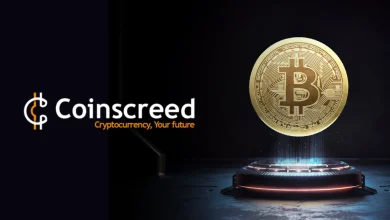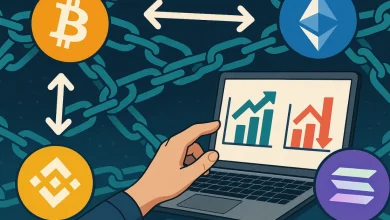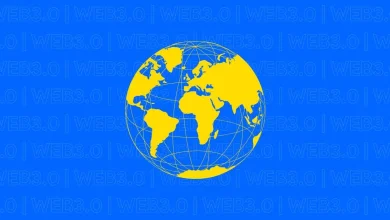
The world wide web has evolved greatly over the 30 odd years it has been around. Going from a scattered, unorganized web of static text and pictures to a network of finely connected centralized platforms, and finally, to the future of decentralized platforms with intricate ideas about ownership and fair distribution. The Web3 evolution has been promised left and right for years now, however, it still hasn’t come.
This is in part because Web3 is extremely ambitious, with many technical hurdles coming our way. However, a lot of it has to do with how we’ve become entrenched in Web2. Companies that might want to move to Web3 might not know how, or might worry that they’ll alienate their preexisting customers.
Today, we’ll be going over a quick history of the web, as well as how some Web2 and Web3 firms have partnered up in this transitory period to ensure mutual benefit.
History of The Web- Why Web3?
Although the world of Web1 feels simplistic in hindsight, it was defined by the existence of decentralized, open protocols that anyone could copy and use. Some of the internet’s first platforms were mailing groups, forums, and bulletin boards working on open-source code.
Then, streaming and social media sites like YouTube and MySpace started cropping up. This led to the era of freely sharing our experiences through video or pictures. With mobile internet becoming more popular during this time, these platforms experienced even more rapid growth.
However, as opposed to the free, decentralized nature of Web1, Web2 consists of platforms largely owned by large corporations pooling users into centralized hubs. These are your Google, your Facebook, your Apple, and more. These are all companies whose platforms cannot be copied, and all of them collect copious amounts of user data veiled under the guise of free services.
dApps And The Promise of Web3
Ever since the rise of Bitcoin, users of Web2 have been looking for ways to approach a new decentralized internet. With dApps(Decentralized apps) growing more and more popular, it seems like it’s simply a matter of time before Web2 is a thing of the past.
DeFi or decentralized finance is already providing millions of individuals with the ability to conduct financial actions without any centralized interference. Many play-to-earn video games are decentralizing entertainment, while social media dApps are looking to decentralize the very way we socialize. These so-called SocialFi apps rely on the sheer safety and ease of use of many blockchains to allow for sending money through social media.
The gaming world is being taken over by GameFi. This is due to GameFi’s emphasis on ownership and real-life rewards for in-game performance. This is contrasted by Web2 gaming companies relying more and more on licenses.
Finally, outside of trustless transactions and the removal of central entities, Web3 provides an exciting new business model. The Decentralized autonomous organization or DAO model describes a business model where users can vote and have a large amount of sway on company decisions.
How Web2 And Web3 Can Work Together
Despite the massive benefits of Web3, there are numerous hurdles to overcome in actually achieving it. Our infrastructure is simply not ready for the kind of heel-face turn we’d need to commit to to facilitate Web3. An example of this is the overreliance on Ethereum- a blockchain with high fees, low throughput, and difficulty scaling. In order to enable the Metaverse for everyone, we’ll need to resolve these issues.
However, in the meantime, Web2 and Web3 can coexist and help each other prepare for the incoming Web3 revolution. For example, it’s common practice for “decentralized” apps to rely on Web2 front-end in order to facilitate their existence, however, this sometimes goes a bit too far, and the blockchain gets pinged once every few hours, instead of once every few milliseconds.
For example, companies like ThunderCore are creating products like the ThunderGene API tool to help Web2 developers create Web3 applications. This helps developers ease the jump from developing for Web3 onto developing for Web3.
Recently, major Web2 tech giants have started moving into the blockchain, helping bridge the gap between Web2 and Web3. For example, Meta has already built Horizon Worlds packed with digital asset capabilities, and is testing Instagram NFT integration. On the other side of the fence, Twitter already has NFT Profile Picture Integration. FinTech firms like Venmo, Stripe, and PayPal are also announcing a host of crypto-oriented integrations.
For example RTFKT has partnered with physical sneaker manufacturers to help bring their digital sneakers to life in the real world. Many Web3 companies are turning to Web2 as a place to gather users and bring key value to mainstream markets.
Firms like Looking Glass Labs specialize in bridging the gap between Web2 and Web3. These companies work on providing Web2 firms with an easier onboarding experience to Web3 as well as giving Web3 companies easier access to Web2 markets. They also help create some innovative projects, such as the world’s first NFT TV-show “Genzeroes.”
By partnering with firms like these, and releasing their presence one token at a time is one of the easiest ways for a Web2 firm to become truly Web3. While this process takes time, there are countless opportunities to take advantage of on the way there.
Closing Words
The move from Web2 to Web3 is an extremely complex and intricate process. Web3 is already facing growing pains, increasing gas fees, and facing the consequences of an overreliance on Ethereum. In order to bring about Web3 and create a true Metaverse, we need to understand the requirement for a transitory period.
Web2 and Web3 companies are already making partnerships covering each other’s flaws. For Web2 companies, this provides a valuable chance to get their feet wet in the waters of the Web3 future, while the Web3 companies have a chance to bring their key values to more mainstream markets.
Companies like LGL are at the forefront of this movement, providing asset and branding services to Web2 and Web3 companies alike. This helps forge a bridge between Web2 and Web3, and is doubtless going to help us get to the metaverse as painlessly as possible.
Disclaimer and Risk Warning
The guest posts featured on Coinpedia are contributed by external authors and reflect their personal opinions and viewpoints. Coinpedia does not endorse, verify, or take responsibility for the accuracy, legality, or reliability of the content, advice, or opinions expressed in these guest posts. Including guest posts does not imply Coinpedia's approval of the content or the author’s views. Readers are encouraged to independently evaluate the information and seek professional advice if necessary before acting on any information provided in the guest posts.








